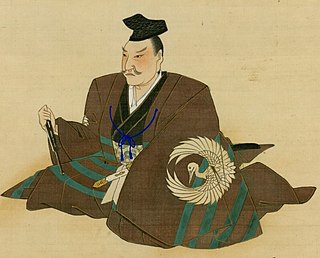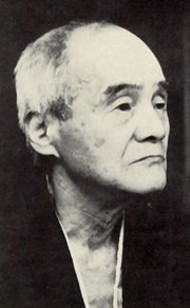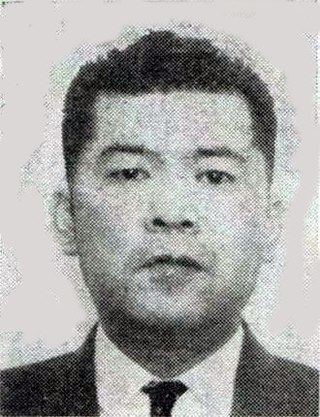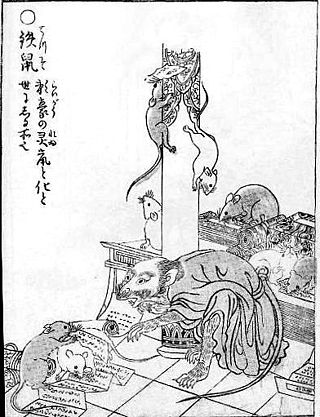
Seki Takakazu, also known as Seki Kōwa, was a Japanese mathematician and author of the Edo period.

Named after Osamu Tezuka, the Tezuka Osamu Cultural Prize is a yearly manga prize awarded to manga artists or their works that follow the Osamu Tezuka manga approach founded and sponsored by Asahi Shimbun. The prize has been awarded since 1997, in Tokyo, Japan.

Kitarō Nishida was a Japanese moral philosopher, philosopher of mathematics and science, and religious scholar. He was the founder of what has been called the Kyoto School of philosophy. He graduated from the University of Tokyo during the Meiji period in 1894 with a degree in philosophy. He was named professor of the Fourth Higher School in Ishikawa Prefecture in 1899 and later became professor of philosophy at Kyoto University. Nishida retired in 1927. In 1940, he was awarded the Order of Culture. He participated in establishing the Chiba Institute of Technology (千葉工業大学) from 1940.
Japanese mathematics denotes a distinct kind of mathematics which was developed in Japan during the Edo period (1603–1867). The term wasan, from wa ("Japanese") and san ("calculation"), was coined in the 1870s and employed to distinguish native Japanese mathematical theory from Western mathematics.
Hiroki Azuma is a Japanese cultural critic, novelist, and philosopher. He is the co-founder and former director of Genron, an independent institute in Tokyo, Japan.
Many Japanese words of Portuguese origin entered the Japanese language when Portuguese Jesuit priests introduced Christian ideas, Western science, technology and new products to the Japanese during the Muromachi period.
In Japanese, encyclopedias are known as hyakka jiten (百科事典), which literally means "book of a hundred subjects," and can trace their origins to the early Heian period, in the ninth century. Encyclopedic works were published in Japan for well over a thousand years before Japan's first modern encyclopedias were published after Japan's opening to the West, during the Meiji Period (1868–1912). Several encyclopedias have been published in Japan since World War II, including several children's encyclopedias, and two major titles are currently available: the Encyclopedia Nipponica, published by Shogakukan, and the Sekai Dai-Hyakka Jiten, compiled by the Heibonsha publishing company. A Japanese Wikipedia is also available.
Japanese dictionaries have a history that began over 1300 years ago when Japanese Buddhist priests, who wanted to understand Chinese sutras, adapted Chinese character dictionaries. Present-day Japanese lexicographers are exploring computerized editing and electronic dictionaries. According to Nakao Keisuke (中尾啓介):
It has often been said that dictionary publishing in Japan is active and prosperous, that Japanese people are well provided for with reference tools, and that lexicography here, in practice as well as in research, has produced a number of valuable reference books together with voluminous academic studies. (1998:35)
Iwanami Shoten, Publishers is a Japanese publishing company based in Tokyo.
Kujiki (旧事紀), or Sendai Kuji Hongi (先代旧事本紀), is a historical Japanese text. It was generally believed to have been one of the earliest Japanese histories until the middle of the Edo period, when scholars such as Tokugawa Mitsukuni and Tada Yoshitoshi successfully contended that it was an imitation based on the Nihon Shoki, the Kojiki and the Kogo Shūi. Scholarship on the Kujiki generally considers it to contain some genuine elements, specifically that Book 5 preserves traditions of the Mononobe and Owari clans, and that Book 10 preserves the earlier historical record the Kokuzō Hongi.

Hajime Tanabe was a Japanese philosopher of science, particularly of mathematics and physics. His work brought together elements of Buddhism, scientific thought, Western philosophy, Christianity, and Marxism. In the postwar years, Tanabe coined the concept of metanoetics, proposing that the limits of speculative philosophy and reason must be surpassed by metanoia.
Kambei Mori or Mōri Kambei, also known as Mōri Kambei ShigeyoshiMōri Shigeyoshi, was a Japanese mathematician in the Edo period.

Yoshida Mitsuyoshi, also known as Yoshida Kōyū, was a Japanese mathematician in the Edo period. His popular and widely disseminated published work made him the most well known writer about mathematics in his lifetime.
The Kenkyusha Co., Ltd. is a publishing house with headquarters in Chiyoda, Tokyo, Japan. Its product range is centered on foreign language—mainly English—dictionaries and textbooks. The name, Kenkyūsha, can be translated as "study/research company".
Tokushi Kasahara is a Japanese historian. He is a professor emeritus at Tsuru University and his area of expertise is modern Chinese history.

Isamu Togawa was a Japanese writer and political commentator. Togawa was born in the city of Hiratsuka in Kanagawa Prefecture. His father was the novelist and former mayor of Hiratsuka Sadao Togawa and his younger brother was the novelist Itaru Kikumura.

Yō Yoshida is a Japanese actress who is represented by the talent agency Oranku.

Rikitarō Fujisawa was a Japanese mathematician. During the Meiji era he was instrumental in reforming mathematics education in Japan and establishing the ideas of European mathematics in Japan.

Tesso (鉄鼠) is a Japanese yōkai related to the vengeful spirit (onryō) of the Heian period monk Raigō and a mouse. The name "tesso" is a name given by Toriyama Sekien in the Edo period collection of yōkai pictures, the Gazu Hyakki Yagyō, and this yōkai can also be called the Raigo-derived name Raigō-nezumi (頼豪鼠) as from the Enkyōhon, a yomihon version of the Heike Monogatari, or Mii-dera-nezumi (三井寺鼠) derived from Mii-dera in Ōtsu, Shiga Prefecture as in the Edo period yōkai themed kyōka picture book, the Kyōka Hyaku Monogatari. They became known starting in the Heisei period from its adoption in the mystery novel Tesso no Ori by Natsuhiko Kyogoku.

Negitoro is a Japanese cuisine of minced raw tuna scrape, the fatty parts of the fish that cannot be made into other meals, commonly served together with green onion. In addition to being an ingredient to sushi of various types, they are used as a rice bowl topping, forming negitorodon.










